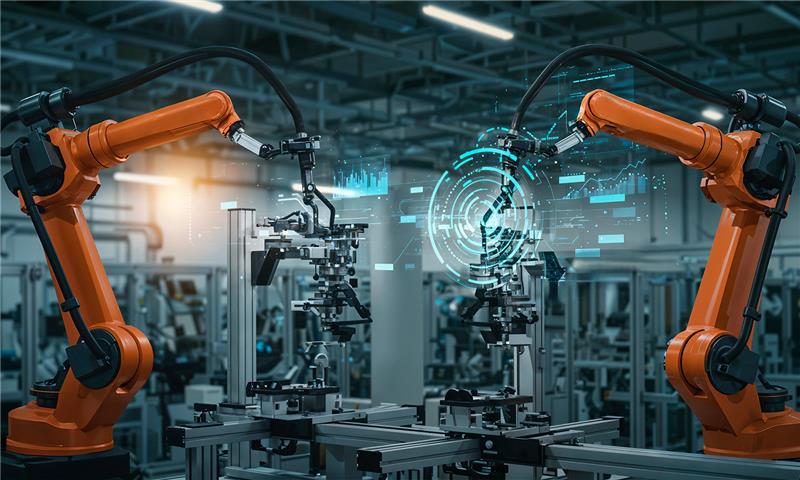What Is a Digital Twin and Why It’s Key to Industry 4.0

In the era of Industry 4.0, the pace of innovation demands tools that bridge the physical and digital worlds. Enter the digital twin, a live virtual replica of machines, processes, or entire facilities that continuously mirrors real-world behavior. By harnessing IoT digital twin integration, advanced analytics, and cloud computing, businesses gain unprecedented insight into performance, maintenance needs, and optimization opportunities. From leading global manufacturing hubs like Hannover, Germany—home to the renowned Hannover Messe technology fair this trend is reshaping the future of industry. This post unpacks the digital twin definition, illustrates its transformative power across industries, and shows you how to plan a successful deployment.
What Is a Digital Twin?
A digital twin is a dynamic, data-driven model that faithfully reproduces a physical asset’s characteristics and operational state. Unlike a static simulation, it remains synchronized via real-time sensor feeds and historical data, making it a living “mirror” for everything from a single motor to a complex manufacturing line. This continuous mirroring enables teams to observe equipment behavior under varying conditions without risk to physical hardware. By combining operational history with live inputs, digital twins provide a holistic view that drives smarter decision-making.
How Digital Twin Technology Works
1. Sensor Data Collection
Devices outfitted with IoT sensors stream metrics like temperature, vibration, and throughput into the virtual model. These high-frequency data points form the foundation of a twin’s accuracy, reflecting every nuance of machine performance. Over time, the aggregation of this data builds rich behavioral profiles that improve anomaly detection and trend analysis.
2. Data Processing & Analytics
Digital twin analytics platforms leverage AI to detect anomalies, predict failures, and recommend adjustments. Advanced algorithms sift through vast datasets, highlighting subtle patterns that human operators might miss. This prescriptive insight allows maintenance teams to plan interventions precisely when they’re needed, rather than on arbitrary schedules.
3. Visualization & Interaction
Engineers use dashboards or AR/VR interfaces to inspect the virtual asset, run “what-if” scenarios, and refine processes without interrupting production. Interactive tools let users drill down into specific components or zoom out for a system-wide perspective, enhancing both tactical and strategic planning. By visualizing potential modifications before physical implementation, teams can avoid costly trial-and-error cycles on the factory floor.
Why Digital Twins Are Essential to Industry 4.0
Industry 4.0 envisions fully networked, self-optimizing production ecosystems. Digital twins serve as the linchpin by:
- Enabling predictive maintenance—catch issues before they halt operations. Beyond simply alerting teams, predictive maintenance strategies backed by twins can schedule parts replacements and inspections during planned downtime windows. This proactive approach extends asset lifespans and prevents cascading failures.
- Supporting virtual commissioning, where equipment is tested and tuned digitally before installation. By validating configurations in a risk-free environment, virtual commissioning shortens ramp-up times and ensures that complex systems perform as intended from day one.
- This process enables real-time optimization in response to changes in factory floor conditions. When unexpected production bottlenecks or quality dips arise, the twin can suggest immediate process adjustments, minimizing scrap rates and throughput losses.
Top Industry Use Cases
- Manufacturing: Simulate assembly-line changes safely and cost-effectively (digital twin in manufacturing). Manufacturers can experiment with new layouts or shift schedules in the virtual domain, avoiding disruptions to live production. Over time, this accelerates continuous improvement cycles and boosts overall equipment effectiveness.
- Automotive: Conduct virtual crash tests and durability analyses to speed R&D (digital twin in the automotive industry). By modeling material responses and crash dynamics digitally, automakers reduce reliance on expensive physical prototypes and comply more quickly with evolving safety regulations.
- Energy: Model power-grid behavior under stress to bolster reliability (digital twin in the energy sector). Utilities can anticipate load-shedding scenarios or equipment overloads, then adjust generation and distribution plans in real time to maintain service continuity.
- Healthcare & Smart Cities:Optimize patient flows in hospitals and manage urban traffic systems in real time (digital twin in healthcare, digital twin for smart cities). These twins help planners visualize crowd movements, resource allocation, and emergency scenarios, improving both safety and efficiency in critical infrastructure.
Building Blocks of a Digital Twin Platform
- Digital twin software that ingests streaming IoT data. Robust ingestion pipelines ensure that every sensor reading, log entry, and quality metric is captured and timestamped for analysis. Scalability in these platforms accommodates the growing volume of data as more assets come online.
- Cloud-based digital twin environments for scalable storage and compute. Leveraging cloud elasticity, organizations can spin up powerful simulation clusters on demand, running complex scenarios without investing in on-premises hardware.
- AI and digital twins integration for predictive and prescriptive insights. Machine-learning models continuously refine their predictions as new data flows in, making each forecast more reliable than the last.
- Secure connectivity layers to safeguard data in transit and at rest. Encryption protocols and zero-trust architectures protect sensitive operational data from interception or tampering, ensuring both compliance and peace of mind.
Integration Best Practices
- Pilot first: Start with a single asset to refine your digital twin implementation best practices.
- Define data requirements clearly—ensure high-quality sensor inputs.
- Use open standards and APIs to simplify digital twin integration steps
- Collaborate cross-functionally so IT, engineering, and operations share goals.
Unlocking Value: Benefits and ROI with Digital Twins
- Cost Savings: Cut unplanned downtime by up to 30% through digital twin predictive maintenance.
- Efficiency Boosts: Fine-tune workflows and asset utilization in real time.
- Faster Innovation: Test new configurations virtually before committing CAPEX.
Measuring Success
Key metrics include:
- Downtime Reduction: Hours saved per quarter.
- Throughput Gains: Percentage increases in output.
- Maintenance Cost: Reduction in expense per operating hour.
Digital Twin Lifecycle Stages
- Model Creation: Build your creating a digital twin model with accurate geometry and behavioral rules.
- Deployment & Calibration: Sync real-time sensor data and validate model fidelity.
- Continuous Monitoring: Track deviations and trigger alerts automatically.
- Iterative Improvement: Update the model with new data and expand to additional assets (digital twin lifecycle management).
Common Challenges & Mitigations
- Data Quality Issues: Regularly calibrate sensors and validate inputs.
- Security Concerns: Encrypt data streams and implement strict access controls to counter digital twin security concerns.
- Organizational Change: Offer training and phased rollouts to build user confidence.
- Iterative Improvement: Update the model with new data and expand to additional assets (digital twin lifecycle management).
What’s Next for Digital Twins?
- Edge-based twins for ultra-low latency decision-making. Processing data closer to the source enables split-second responses in critical applications like robotics or autonomous vehicles.
- Federated twins that share models across organizational boundaries. Collaborative twins can span supplier networks or joint ventures, unlocking ecosystem-level optimization.
- 5G integration enabling richer data streams and remote management. Higher bandwidth and lower latency will expand use cases in remote diagnostics and live AR overlays.
The Road to Fully Autonomous Factories
As digital twins converge with AR/VR, robotics, and advanced AI, they’ll power factories that self-optimize, self-heal, and even self-configure—ushering in a new manufacturing paradigm.
Conclusion
A digital twin is not merely optional; it serves as the essential digital backbone of any robust Industry 4.0 strategy. From innovation hubs like Hannover, Germany—where digital transformation is showcased on a global stage—you can see how real-time mirroring of the physical world unlocks predictive insights, boosts operational resilience, and accelerates innovation. Investing in a robust digital twin framework empowers your teams to make data-driven decisions, reduce risk, and stay ahead of market demands. As technologies evolve, your digital twin will adapt, ensuring long-term scalability and competitive advantage














 Twitter
Twitter